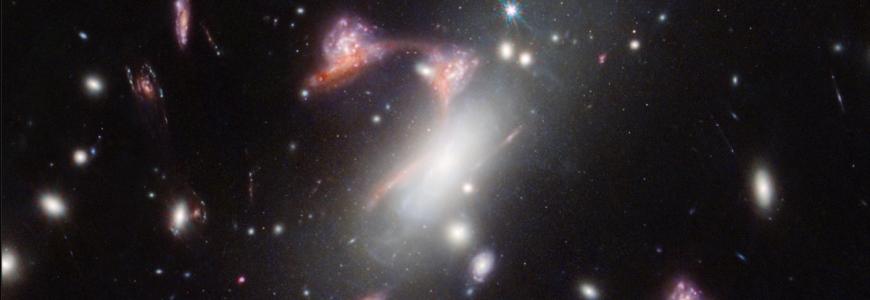Using Gravitational Lensing to Detect Dark Matter
Science for the Public: Contemporary Science Issues & Innovations
January 14, 2025 live event at Belmont Senior Center
Jacqueline McCleary, Ph.D., Assistant Professor of Physics, Northeastern University.
The much-noted “cosmic question mark” image above is the result of a rare alignment between two distant galaxies due to gravitational lensing. Professor Jacqueline McCleary explains how astrophysicists use such examples of weak gravitational lensing between galaxy clusters to explore the nature of elusive dark matter and its interaction with galaxies. She discusses how scientists gather and analyze data from observatories on mountaintops, in the stratosphere, and in space.
Dr. McCleary is a collaborator in the Local Volume Complete Cluster Survey (LoVoCCS), the Superpressure Balloon-borne Imaging Telescope (SuperBIT), and COSMOS-Web (a JWST collaboration).
background:

